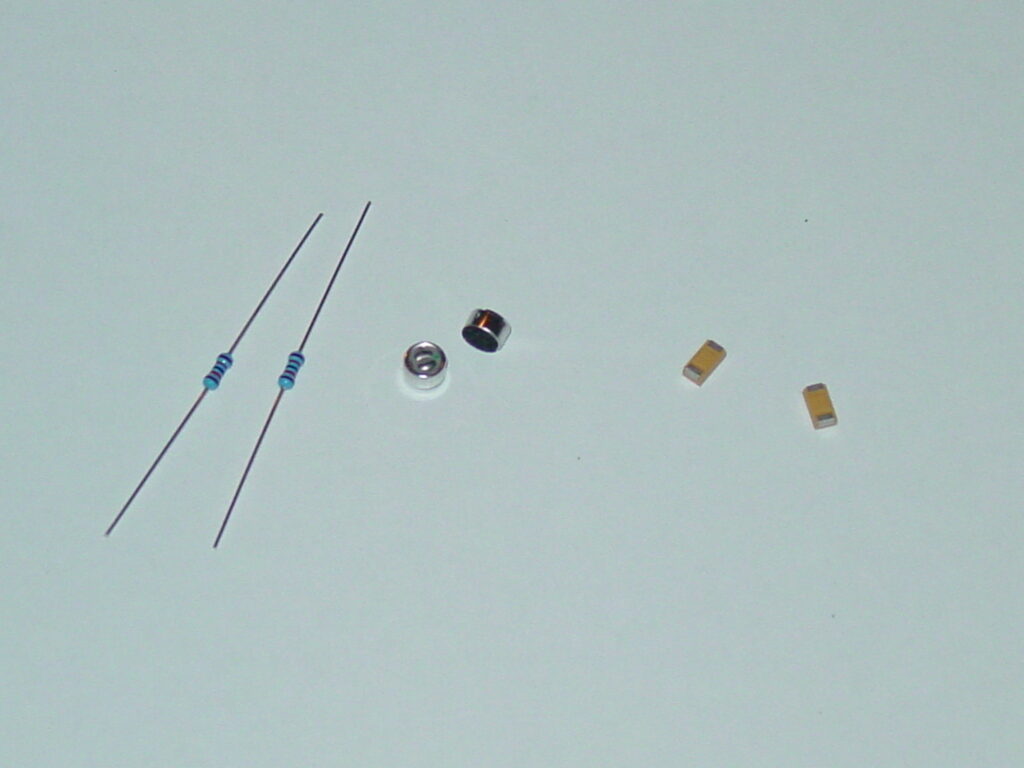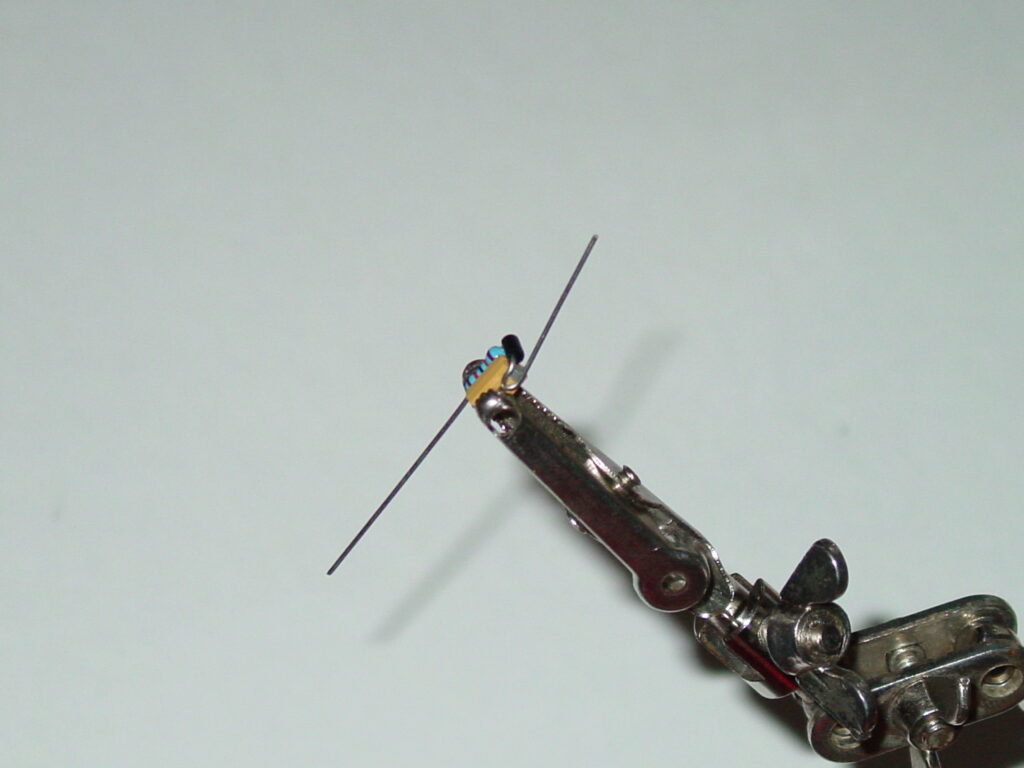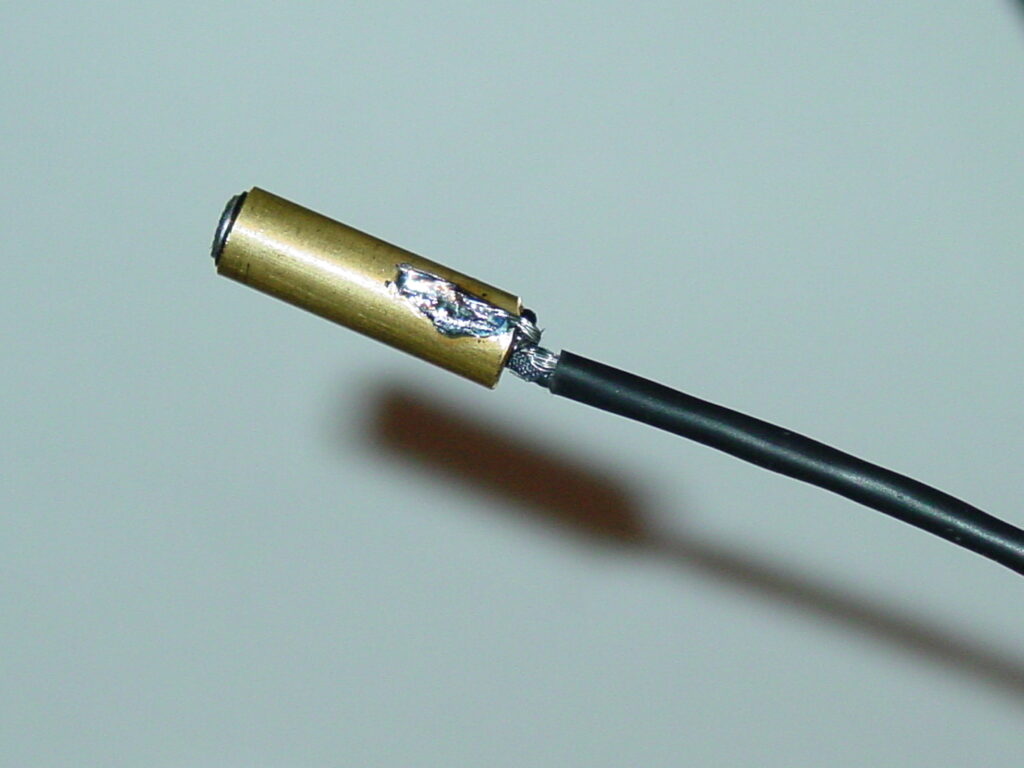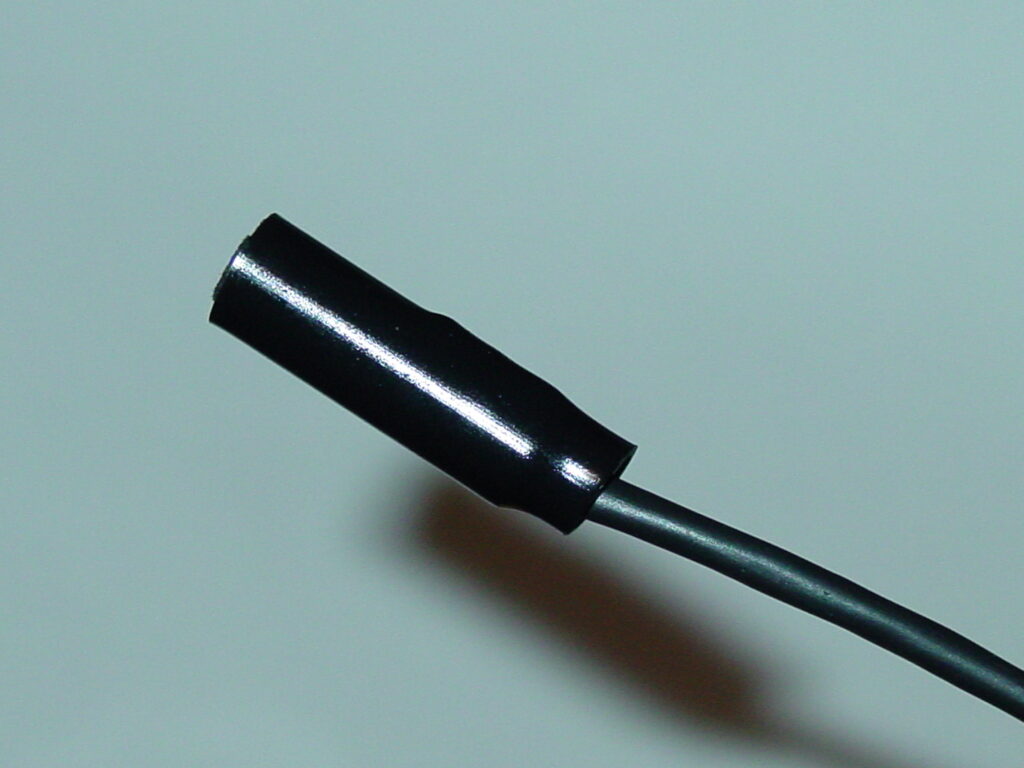The story of the simplest phantom power circuit
This is the story of the Simple P48 circuit, used to connect low voltage electret capsules to 48V phantom power. It all started when someone showed me a small microphone made from a Panasonic WM-61a capsule. It was nothing but an XLR connector with a little, brass tube sticking out. Now, I suspect that these mics were using the Linkwitz mod for higher SPL handling, but that seemed like a lot of trouble so I decided to see what I could do with un-modded capsules.
Then the question was how to run them off the phantom power available from my field recorder (then a Tascam DR-680). Clearly, a resister would be needed to drop 48V down to the roughly 2V the WM-61a wants. Next, put capacitor in one of the signal lines to block the voltage from getting back into the signal lines. Put it all together and you get something like this:
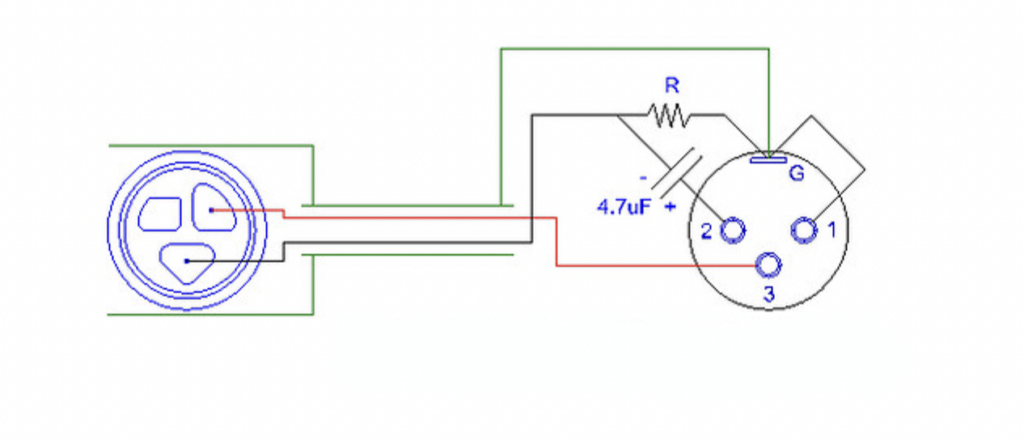
Thanks to Tom Benedict for the circuit graphic.
A few notes on this circuit:
- The ground connects to the shield of the cable and surrounds the capsule but does not connect to it since the capsules ground will be at +46V. The capsule must be insulated from the real ground somehow.
- This circuit is not balanced. It may well pick up interference in a strong EMI environment.
- The resistor’s value should be adjusted based on the current draw of the capsule. 68k seems to work well for a WM-61a.
- The capacitor should be as large a value as practical to avoid high-pass filtering.
- Anecdotal evidence suggests that tantalum caps don’t work well.
I built a bunch of tiny mics based on this circuit and did some recording with them. They sound pretty good; very good frequency response, good enough dynamic range and sensitivity. Kinda flat and boring but that worked well when I started using them to calibrate ambisonic microphones. Around that time I was working with Richard Lee to develop the encoding system for the Core Sound TetraMic so I sent him a tiny mic to use as a reference. At first I thought he didn’t like it. He complained that it wasn’t balanced – which is true. But later he published this article describing the circuit and crediting it to me. From there it escaped to the DIY mic builders group and today there are hundreds of hits for “Simple P48” on Google.
I only heard years later that I had been given credit for coming up with this circuit. I think this is a bit silly, mostly because I think it’s too simple and obvious for anyone to take much credit. After all, a similar circuit is given in the data sheet for the Panasonic capsule. But if it has helped make it a little easier for people to build microphones, that’s great. And coming full circle, I now have an Ambi-Alice tetrehedral mic from Jules Ryckebusch which uses the Simple P48 circuit and I really like it.
Tiny Mics
I built mics using WM-61a capsules and the Simple P48 circuit into a small brass tube. This could either be attached to the end of a cable, as in the photos below, or stuck in the end of an XLR connector. Note that the inner heat shrink must cover he capsule to insulate it from the brass tube. I would often fill the whole thing with hot glue as well.
